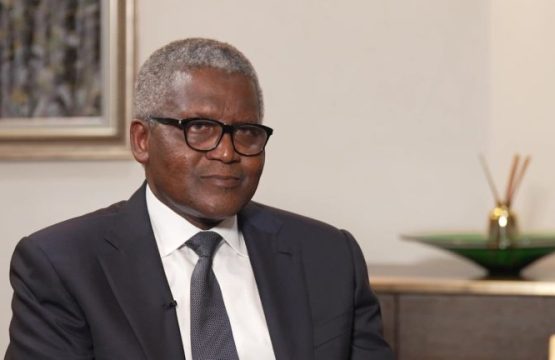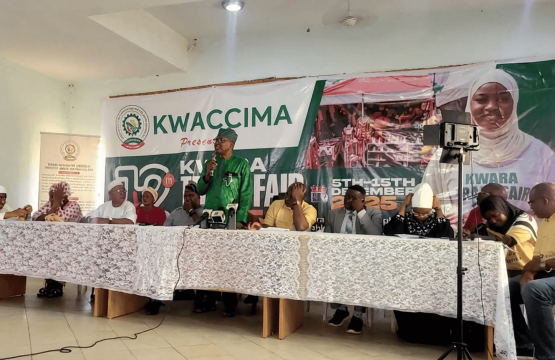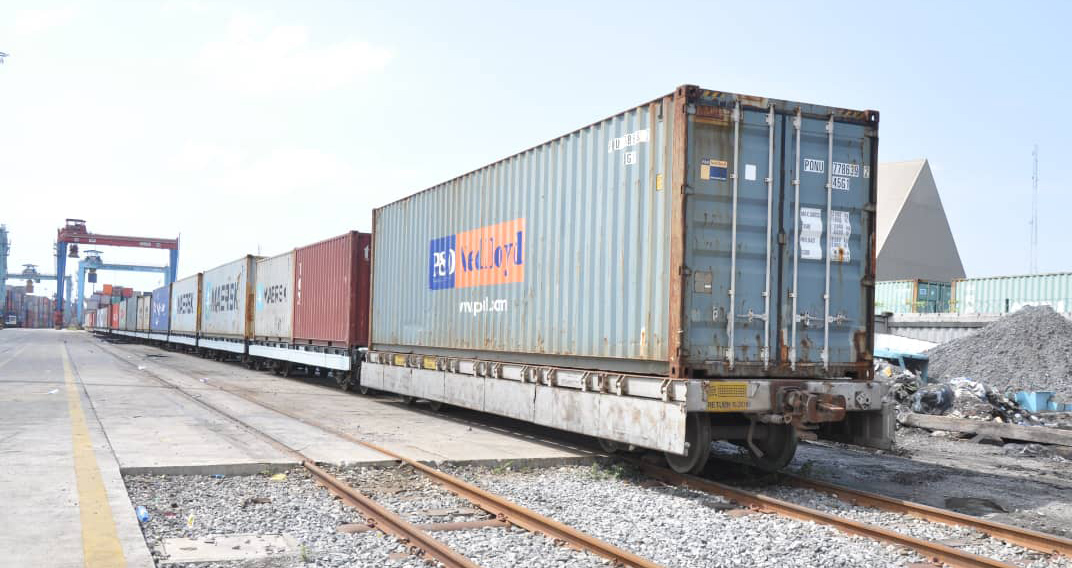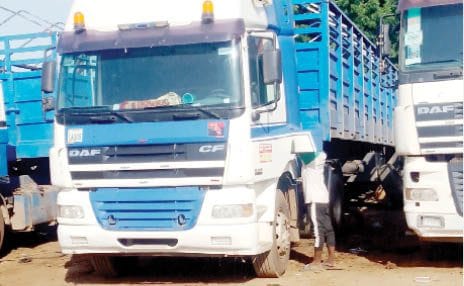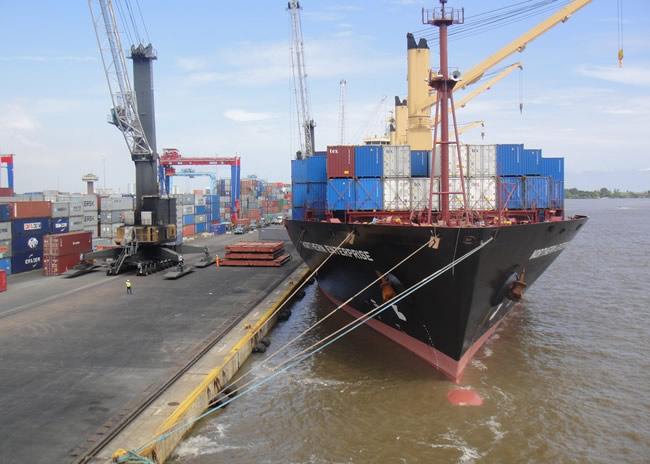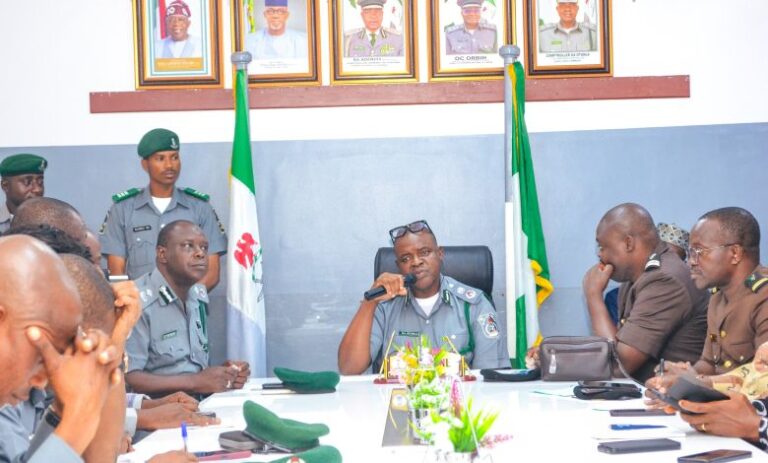▪︎APM Rail Terminals Kano
The Nigerian Shippers Council (NSC) and the Nigerian Railway Corporation (NRC) say that manufacturing companies, importers and exporters should take advantage of rail services for the transportation of cargoes to and from the seaports to Inland Dry Ports (IDPs).
The two agencies of the government back up the call with signed Memorandum of understanding (MOU) on transportation of cargoes from the seaports to the inland dry ports across the country.
The MoU was signed during a one-day stakeholders sensation summit on ‘Limitations to rail transportation of cargo in Nigeria ‘, held in Apapa, Lagos.
At the event, Barr Pius Akutah, the Executive Secretary of Shippers Council, signed on behalf of the Council, while the Managing Director of NRC, Engr Fidet Okhiria, appended the document for the Corporation.
The NSC boss, highlighted that one of such responsibilities of the Council is to liaise with appropriate arms of the government with a view to identifying issues and problems affecting Inland Transportation across all modes and to monitor intermodal coordination as it relates to challenges, costs and efficiency across these modes of transport.
” I think the road will be freer, goods will get to the market at a cheaper rate, because going by rail will make the end product, or the raw materials, go to the various factories at a cheaper rate.”
” On February 20th, 2014, and following the concession of the Nigerian ports in 2006, aimed at making the Ports effective and efficient in line with global trend and best practices, the government further pronounced the Nigerian Shippers’ Council as an Interim Ports Economic Regulator while it was confirmed as a substantive Ports Economic Regulator in April, 2015.
“Nigerian Railway Corporation (NRC) as a dependable ally is vested with the authority to manage the Public Rail Infrastructure, and to provide rail services and facilities for the carriage of goods and passengers.
In line with their statutory mandates therefore, the two agencies are desirous of collaborating with the aim of ensuring and facilitating the efficient carriage of cargoes from the Seaports to the Inland Dry Ports (IDPs).
The Council’s initiative through closed Inter-Agency collaboration, particularly with the Nigerian Railway Corporation (NRC) is with a view to ensuring:
✓ Enhanced intermodal connections and connectivity; ✓ Fast-track delivery of cargoes to and from Inland Dry Ports (IDPs) in
Nigeria; ✔ Cheaper and cost-effective means of transportation of goods to the hinterland and specifically, the IDPs located at the hinterland;
✓ Facilitation of the development of critical transport infrastructure in the hinterland of Nigeria, etc.
” We should note that Rail Transportation is efficient, economical, and safe, especially for long distances and carriage of large volumes of goods.
It can also reduce greenhouse gas emissions and energy consumption compared with road transportation.
The lack of functional rail system for evacuation of cargo from the seaports to various distribution centres to the hinterland has become a problem in the shipping industry and ease of doing business in Nigeria.
This has resulted in congestion at the seaports, delay in off-loading of vessels and turnaround time, payment of demurrage, increase number of trucks and tankers on the road, traffic gridlock and high cost of doing business.
It is therefore hoped that at the end of this programme, challenges impinging the transportation of cargoes to the hinterland (IDPs) would be identified and solutions proffered.”
On his part, the MD of NRC, noted that now that the collaboration is properly documented,
“We will play our role, and I know trust them they will play their role, and the NPA will also play their role. So what should we be looking forward to? We should be able to move into the terminal, and we should be able to, not to disappoint the customers that we are carrying loads for.
” First of all, we have to have the goods to carry. It’s not really, it’s not Mr. A with half a container, Mr. B with, it has to be properly harnessed, so that, last time we moved from Kano, I think 17 containers, it took, yeah, it took us time to gather those 17 containers from all over the land, and we also try to encourage the Manufacturers Association of Nigeria to come together so that we can move the goods in bulk, and the terminal has to also provide enabling environments for Nigerians and the other importers and exporters to make sure that this comes in cheaply.
On our side, on the rail side, I think it’s not good to be charging special rail at the terminal, and that is a major hindrance, and not encouraging the customer to go by rail, because where you come by rail, no extra charge, and you come to move by rail, 60,000 is charged per container, which is additional cost, so we should allow things to go. The government is trying to see how the people can benefit from all that they are doing.
They have constructed the rail, you know what it costs us to get the rail to the port, the rail is now in the port, and we have businessmen at the terminal, and when you bring the wagons, you spend two, three days before they are loaded, it’s a disaster, and now that the shipyard council, who is in control of that, is going to take the boat by the horn, I think the road will be freer, goods will get to the market at a cheaper rate, because going by rail will make the end product, or the raw materials, go to the various factories at a cheaper rate.
Some of the importers, they don’t want to embrace rail, probably, sorry, lack of confidence, or something. Now, is there any incentive for whoever embraces this type of model?
There’s nothing like, they come to us on a daily basis, and I just explained to you, so if we move cargo to Kano at 1.2, and the road is just 2 point something, what incentive do you need again? So, like, how many containers can the rail move?
No, we can, well, okay, the standard gauge can move 35 at a go, but we can also make it 70, and use double head, and the narrow gauge can move 20 at a go. So, we are looking for the goods to carry.
” We are looking for the goods to carry. What are the numbers, and what are the numbers you’re aiming at, as in, probably, 20 years, or how many? You see, it’s a, what do you call it now, it’s a model.
The timeline should be able to load the wagons within one hour, and we are ready to, once it’s loaded, we are ready to move within the next 10 minutes. We don’t do anything within the terminal. What we, the other things we do is outside the terminal, and the train will be ready to go,” he said.
Mrs Ify Okolue, the Director Inland Services Department of NSC, maintained that the NSC and indeed the Federal Ministry of Marine and Blue Economy stand resolutely committed to creating an enabling environment for the actualization of optimal and seamless movement of cargoes by rail from the seaports to the Inland Dry Ports and the hinterland in general.
” Our Mission continues to align with best international standards and we remain steadfast in our dedication to fostering growth and trade facilitation across our beloved nation,” she said.


